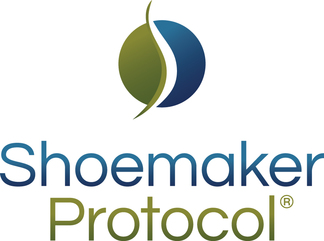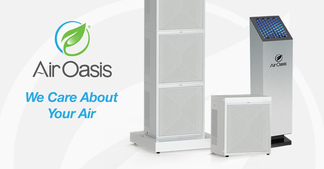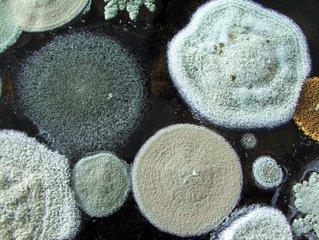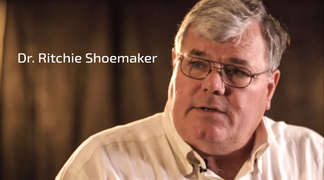Thriving Tips for Travel, the Holidays, and Always

It does take diligence and maintenance, but thriving with CIRS is doable and possible, even through the busy holiday season.
There are apparent consistencies, practices, and behaviors among those who thrive with CIRS that differ from those who experience relapse. It is well worth the effort to implement the necessary practices and make them a part of your thriving routine.
Tens of thousands of Shoemaker patients are thriving in life, and so can you. Here are a few key ideas to help you enjoy healthy happy holidays and getaways, as well as long-term success:
1/ Do your investigative work before you go & run a HERTSMI-2 Test if possible.
Whether you’re visiting a hotel, restaurant, family, friends or having company in your home, always prepare as much as you can ahead of time. It often begins with calling the place you are visiting or your guests ahead of time and having clear communications about your situation. It’s also helpful to have someone go take a look ahead of time for you.
There are a few key points to cover during your initial conversation when visiting a new building:
- Ask to speak with a manager, owner, maintenance supervisor or someone who is familiar with the building’s history.
- Let them know you have strong physical symptoms and reactions to buildings that have had water intrusion damage.
- Instead of asking if there’s mold (this can put them on the defense), ask 1/ how old the building is and 2/ if there’s been “water intrusion damage.” Examples include, plumbing problems, flooding, roof leaks, sprinkler system issues, to name a few.
- Your best bet will be buildings that are under 12 years old. Nearly all buildings 20+ years have had some type of water damage. Find out the extent and if it was remediated to CIRS standards (typically not the case).
- Also avoid buildings with water features, fountains, or open terrariums.
- Without sounding critical, hold your ground and politely get all the facts you can and make an informed choice.
2/ Ask your practitioner about taking CSM (or Welchol) before you go:
Many patients elect to use low-dose cholestyramine or Welchol before venturing into a new environment. If this is your choice, it’s recommended to take it at least two hours before you go into the new building.
If the building passes your initial inspection (see #3) monitor yourself for symptoms for 10 minutes. If no symptoms appear after 10 minutes then it’s likely safe for you to stay, but stay tuned to any physical reactions. If any symptoms appear at any time you are in the environment, leave as quickly as possible and take cholestyramine and Welchol for a week monitoring changes in symptoms.
If no symptoms arise, then it is possible that the home or building is safe for you to visit. Continue on Welchol or cholestyramine for another 72 hours to see if new symptoms appear. Symptoms can arise in just a few minutes or kick in later.
If you do develop symptoms, be sure to take note of the exact symptoms for future reference as they are typically reproduced each time you encounter a toxic environment. You will be able to recognize them quickly in the future.
Some common symptoms to pay attention to are: feeling nauseated, developing a headache, shortness of breath, coughing, a sore throat, or feeling “queasy” or just not feeling well.
If you remain ill beyond one week of treatment then it is time to involve your physician and obtain labs to document where you are.
When taking any protocol medications, always consult with your Shoemaker Practitioner first for accurate dosages and for the best course of action for you.
3/ “Ask, Look, Smell” when you enter a new building. Assume a building is moldy until proven otherwise.
ASK… to speak to someone who knows the building history and ask them how old the building is and if there’s been water damage intrusion (see #1).
LOOK… around for evidence of water intrusion. Are there stained or discolored ceiling tiles, floors, or walls? Check the bathroom for grout and discoloration. Does the floor show buckling, or does the wallpaper show wrinkling? If you see any signs of water damage leave immediately, no more questions asked.
SMELL…when you’re nosing around be sure to notice any smells. If it smells musty it most likely is contaminated. Leave immediately!
4/ Preventing Cross Contamination
Cross contamination fragments and biotoxins that enter safe spaces on carriers can affect CIRS patients. Everything and everyone entering a safe space could be a carrier, even non-porous items that have been stored in a moldy building.
Some patients are so sensitive to low dose exposures that even materials on clothes of children or loved ones can make them ill. If that is the case, then some sort of changing room needs to be made available so people can enter the bubble without contaminating the safe environment. Fortunately, with use of drugs like VIP this extreme reactivity has mostly become a thing of the past. Yet, cross contaminants can build up over time, so precautions still need to be taken.
Carefully managing what comes into your home and reducing the chance of contaminants entering is of great help in reducing contaminant load. Regular thorough cleaning is a non-negotiable and quality air filtration is highly recommended.
Many who are serious about thriving set up a changing room or decontamination room that’s not attached to your safe spaces, or is an ancillary room within a connecting garage. One family in cold-weather Wyoming set up a changing room in the attached garage with an air lock system so they didn’t have to disrobe and change in the freezing cold.
A few potential contaminant culprits to monitor:
- Groceries and store items. If it has porous packaging and comes from a moldy store, it’s likely they’ve been contaminated. Remove all possible packaging, boxes, and bags before entry. Any items stored in warehouses may house contaminants. Even non-porous items will need to be cleaned before entry.
- Packages being delivered by mail, friends, family, or even Santa. Porous shipping boxes, bags, and packing materials can be affected if they’ve come from or been stored in a moldy environment or vehicle.
- Wrap gifts in washable fabric sacks or stockings. Wrapping supplies are often paper materials that can harbor contaminants, too. Let friends and family members know to bring gifts unwrapped or wrapped in washed materials. Or rewrap them, clean them, and then place them under your tree or in safekeeping. An added bonus is you can wash and reuse fabric materials and you don’t have as much wrapping waste.
- Leave it in the changing room:
Keep all outerwear, purses, backpacks… in the changing room.
Be sure all shoes are removed in the changing room. The bottoms of shoes are some of the most contaminated items people own. Keep a (clean) blanket/wrap basket and slipper-sock basket in your clean space for guests, they often love the thoughtful touch.
Guests’ clothing and suitcases. Clothing brought or worn by guests should be freshly laundered and put on just prior to leaving their own environment. Suitcases can also be stored in the changing room or cleaned out with an ammonia compound cleaner such as Fantastik ahead of time. Tell them to leave their own pillows at home (please and thank you J).
- Take your own clean vehicle whenever possible. Cars can and do harbor contaminants, too.
5/ Use quality air filtration or take it with you!
Although air filtration isn’t a replacement for remediation and rigorous cleaning, it is a great help to sustain and improve the air quality in safe spaces. It acts as another layer of protection always working to reduce air-born contaminated dust and fragments that can escape all other attempts to keep your space “safe.”
6/ Put your health first
When in doubt about a new building, home, hotel, restaurant… it’s safest to assume they are moldy if you haven’t found the answers you need. It’s always best to continue the search and find one that is safe for you, or find an alternate solution.
Patients sometimes make exceptions at the holidays or in “special circumstances,” but consider if relapsing into debilitating symptoms and not being able to enjoy the occasion, and then needing recovery time too, is really worth it.
7/ If you’re experiencing symptoms try and nip them in the bud
Symptoms can arise in just a few minutes or kick in later, typically within a 72-hour period.
Also, keep in mind that repeated exposure to “less sick” buildings can be harmful over time. Cross contamination can also build up in a home or from revisiting lower-level moldy buildings. That’s why maintaining a good tracking system can be helpful to diagnose and prevent a full relapse.
It’s also a good idea to take a VCS test when possible symptoms first arise to confirm if they are indeed CIRS symptoms and if they’re progressing.
If you do experience advancing symptoms, bring your VCS results printout to your Practitioner ASAP.
8/ Find experienced support including a Shoemaker Practitioner. These tips are not a substitute for working with a knowledgeable practitioner.
Mold/Biotoxin Illness and lasting recovery can be overwhelming and requires a dedicated, systemized approach every step of the way. Find a Shoemaker Practitioner and the science-backed resources and support you need at Survivingmold.com, and learn how to thrive for the long haul.
Getting sound information, resources, and systems in place is well worth the initial learning curve and effort.
For a more in-depth look into these thriving tips...
ORDER THE BOOK “Mold Illness: Surviving & Thriving”
You can also access the top Surviving Mold Resources Below:
KEY PATIENT RESOURCES OR KEY PHYSICIAN RESOURCES
Featured Resources for Remediation
Shoemaker Protocol™ Quick Start:
The 3 initial steps to determine if mold is affecting you One of the most common questions we hear is, “how do I know if I have mold illness?” Rest assured, if you’re asking this question, you’ve come to the right place.
AirOasis The #1 CIRS Spring Cleaning Hack
Specialized air purifiers are revolutionizing deep cleaning, no matter the season. They’re a game changer for remediation purposes, too.
Free Got Mold Guide
The only science-based, proven, peer-reviewed path to recovery. Discover the Shoemaker process and protocol for diagnosing, testing and treating Mold Illness.
The Surviving Mold Membership Program
The Membership Program was created as a place for both CIRS patients and practitioners to learn, stay current, connect, and thrive as they learn what it means to navigate life with CIRS.
Healing connections: Doctors who embrace their practice with the soul of a poet.
The following article pulls a few excerpts from a piece by one of Dr. Shoemaker’s patients, Shaler McClure Wright. The piece appeared as an episode in a series titled, “Soul Chronicles for the Chronically Ill” on healthstorycollaborative.org




